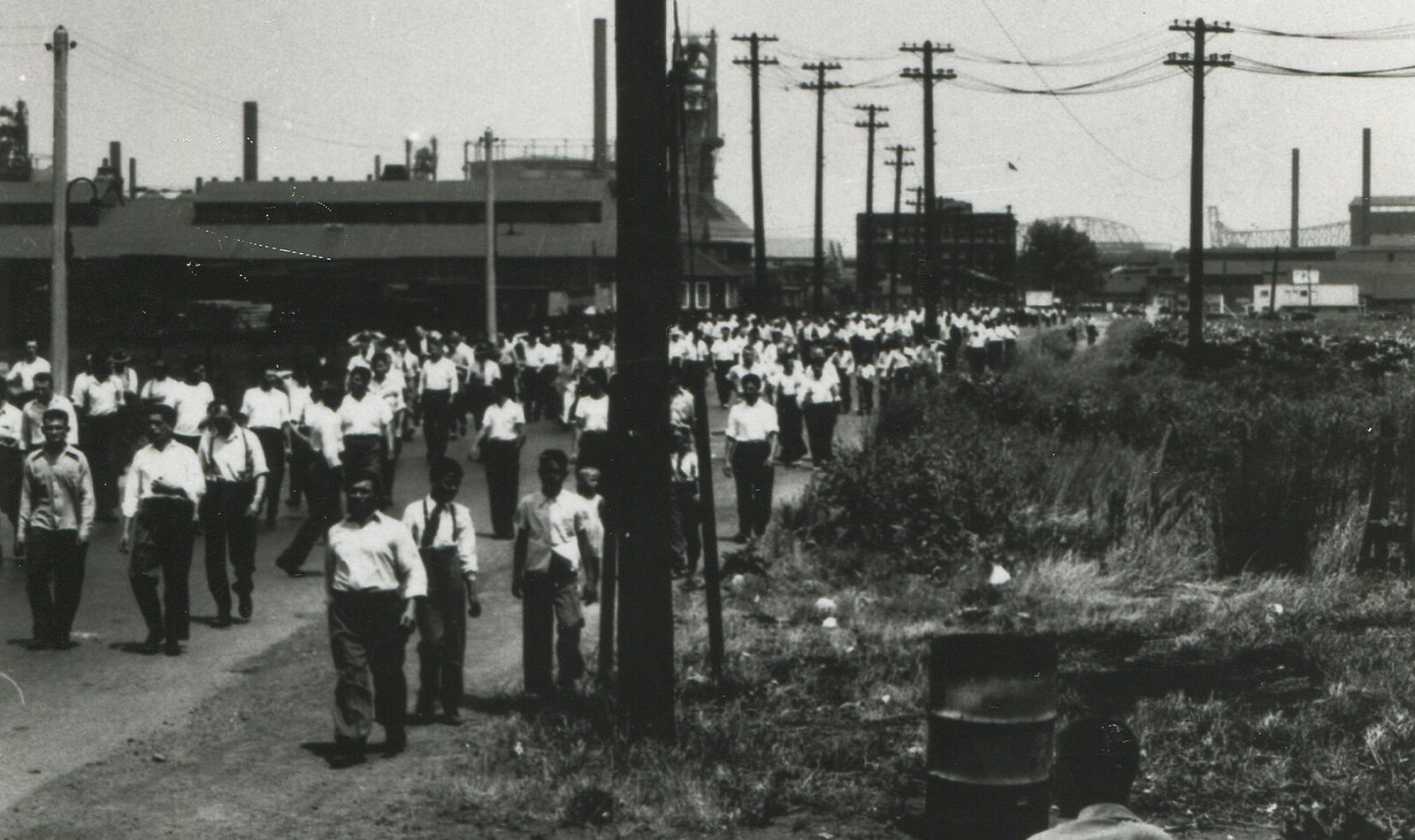Woodlands Park
North side of Barton Street East between Wentworth Street and Sanford Avenue North
Just south of the Westinghouse Complex, this six-acre area was originally known as Land’s Bush but eventually became known as Woodlands Park. It was a place for workers to play baseball, to engage in hot political debate or simply to relax after a long day’s work. During the Great Depression, workers gathered here to discuss unemployment and welfare, and the park was also the site of meetings and large demonstrations. Westinghouse officials might have controlled the factory, but the workers controlled the park. “My husband almost divorced me because I go almost every night beside the Westinghouse to the meeting,” said one Ukrainian activist.


One of the most memorable demonstrations took place on Sunday, May 1, 1932. Ten thousand Hamiltonians packed into the park to attend a giant May Day rally organized by local progressives. As the first speaker took the podium, local police flooded out of the arena on the other side of Barton Street East. Armed with night sticks, they promptly arrested the event organizers. Dispersing the crowd was not as easy. People surged up and down Barton Street East for hours. Some took refuge on the front verandas of friendly neighbourhood residents. In the end, firemen hosed the demonstrators into submission.
During the 1940s, the park became an important organizing place for the United Electrical Workers (UE). Former Local 504 president Alf Ready remembers:
It was nothing to see two or three thousand out there on a noon hour…we would talk about what the union means. George Harris from the UE was possibly the best speaker anywhere — oh boy, he could thrill you. And the men got bolder. At first they used to listen, all hiding behind trees, so the boss wouldn’t see them. Then they came out from behind the trees.
Members of UE Local 504 joined thousands of other striking workers after holding their strike vote in the park on July 8, 1946. Later that summer, thousands of workers from across Hamilton gathered in the park to march on Stelco in support of striking steelworkers.
“Improvements” by the city’s Parks Board took the park away from the workers in 1947. Organized labour fought a battle of words with Board members to save its park. The labour movement lost an important speaking platform when the park’s bandstand was demolished. The United Steelworkers accused the Parks Board of trying to “throttle free speech”. “Woodlands Park has become a traditional meeting place for workmen,” protested Controller Helen Anderson, “Trade unionism in this city has its roots there”. These complaints fell on deaf ears. The renovations meant that many of the park’s grand old trees came crashing down. The park was graded and sodded and its character destroyed.
The only remnant of labour’s proud use of this site is a plaque commemorating Hamilton labour MLA Allan Studholme located in the middle of the park’s southern border facing Barton Street East.
